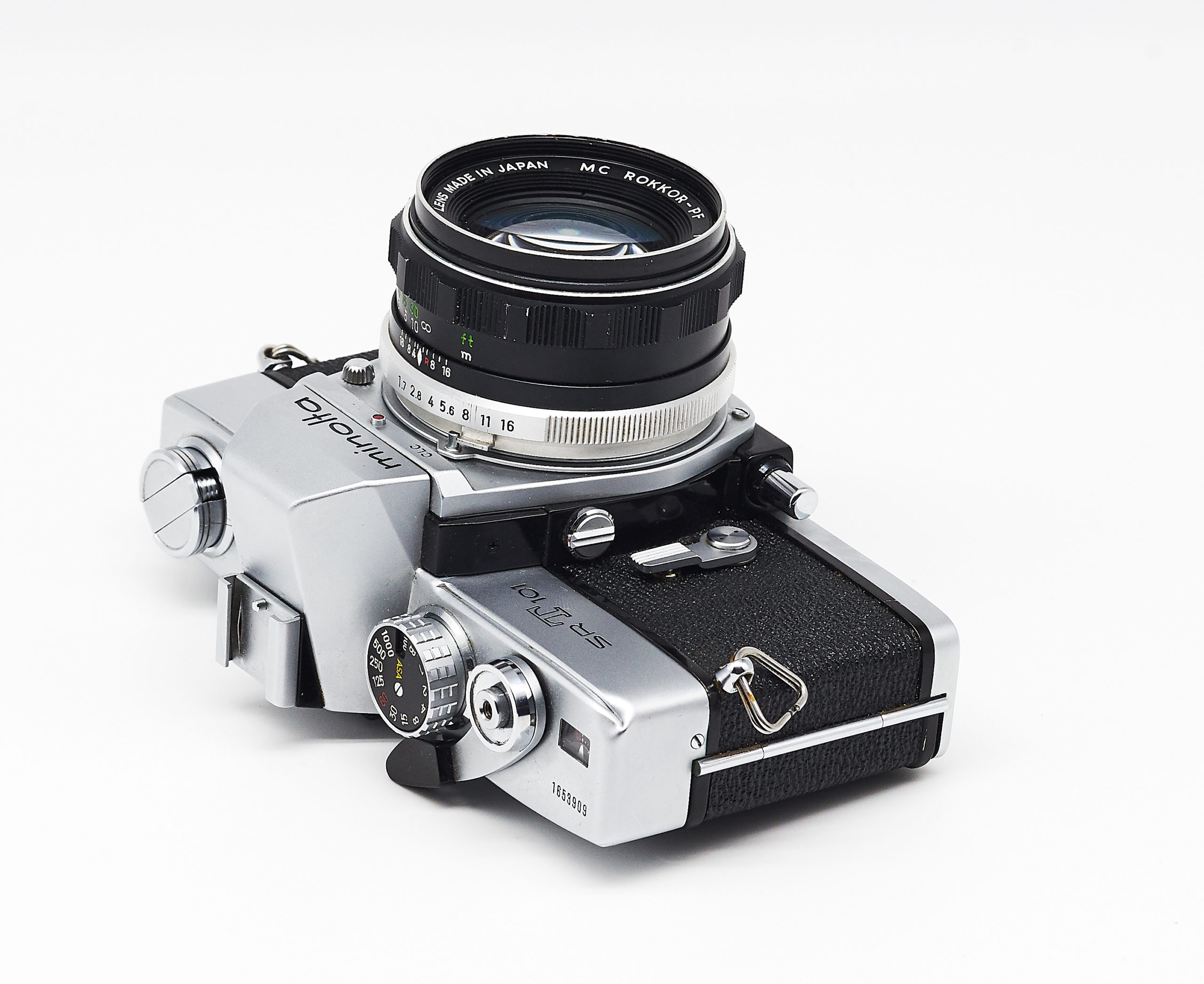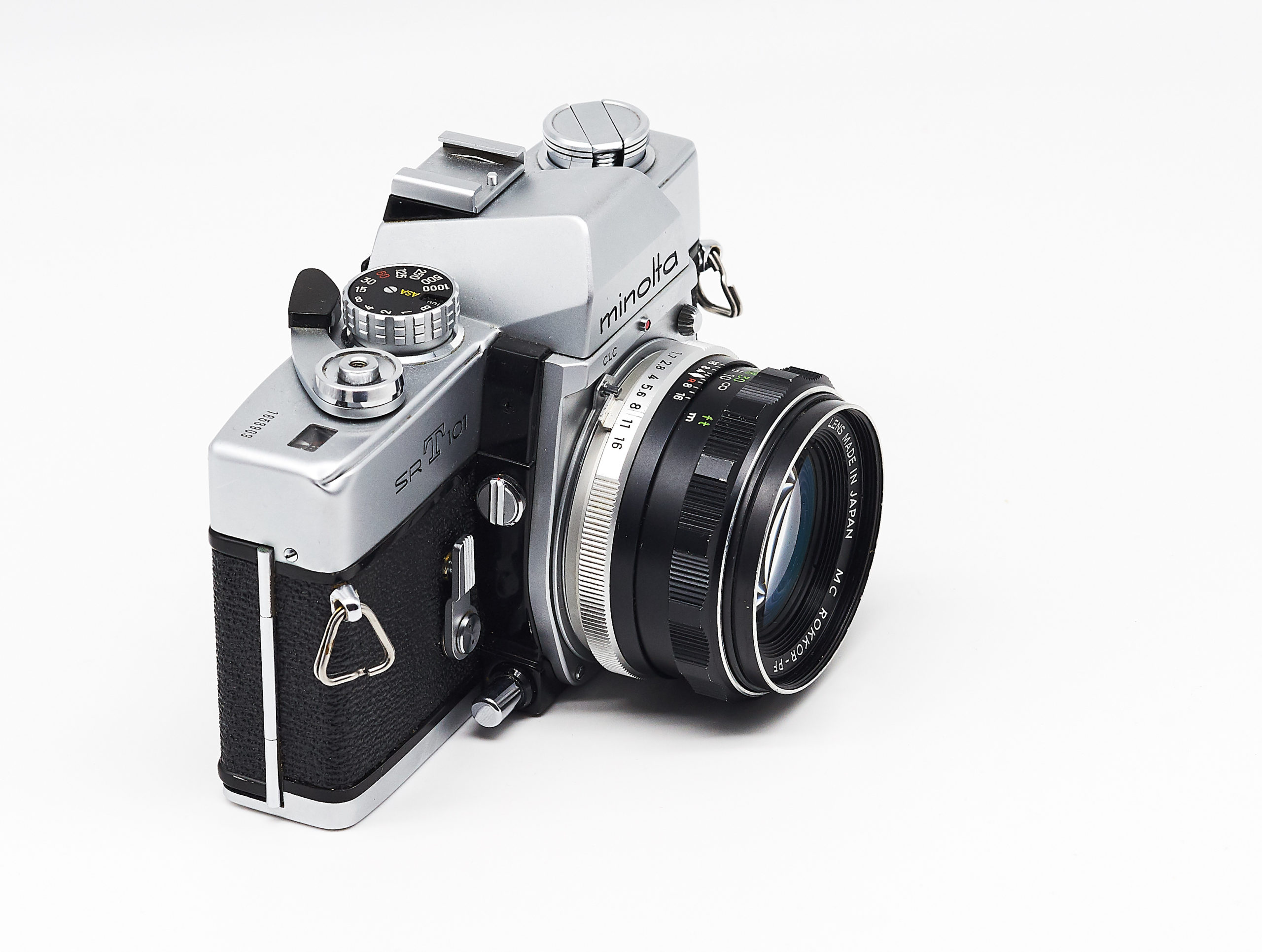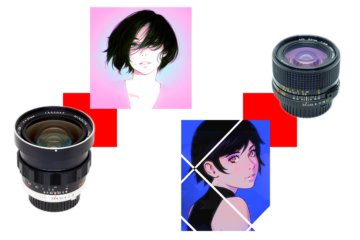Minolta MC Rokkor PF 55mm 1:1.7 – MC II – review

Minolta MC Rokkor PF 55mm 1:1.7 vintage manual lens review (Minolta MC Tele Rokkor-PF 1:1.7 f=55mm)
- Official classification: MC
- Collector’s classification: MC II, Hills &Valleys, Knurled
It is difficult to predict the test results by lenses with average specifications. Sometimes they can give us surprises because are working better than more powerful sisters. This Minolta 55/1.7 also has such a chance: it is not ultra-fast and not from the top-end of the products line, but F1.7 still sufficient for a photographer. And the one more nice feature – low price makes it affordable for everyone.
Minolta MC Rokkor PF 55mm 1:1.7 specifications
| minolta.eazypix.de index | 118 |
| Name engraved on lens | MC ROKKOR-PF |
| f | 55 |
| A max | 1.7 |
| A min | 16 |
| Elements | 6 |
| Groups | 5 |
| Filter thread | 52 |
| Lens Shade | D52ND |
| close | 0.5/1.75 |
| Dimension | 63×37 |
| Weight | 230 |
| Year | 1970 |
| Style | MC II |
| Code No. | 632-2xx |
More data
| Floating elements | NO |
| Aperture blades number | 6 |
| Confidence in the test results of reviewed copies | High |
| Reviewed Lens SN: | 2716204 |
Historical notes
This is the second and final reincarnation of Rokkor 55/1.7. Previously on this focal distance, Minolta has produced lenses with max F1.8, later they switched to 50mm only. With this particular characteristics – 55mm 1:1.7 – the just two exist, the first “flat-grip” and the later “knurled” (MC-I and MC-II by collectors classification). The difference is in the shape of focusing rings, but it needs to be remembered that 60′-70′ was a period of permanent changes and better to admit that even lenses with close serials may show a different behavior until proven otherwise. Unfortunately, all these 55/1.7 aren’t popular and I have not enough information.
- Minolta MC ROkkor PF 55mm f/1.7 weight
- Minolta MC ROkkor PF 55mm f/1.7 optical design scheme
Minolta MC Rokkor PF 55mm 1:1.7 lens exterior:
Minolta MC Rokkor PF 55mm 1:1.7 mounted on On Minolta SR-T 101
This set is authentic, both camera and lens were in production in the same period of time:
Minolta MC Rokkor PF 55mm 1:1.7 sharpness
Сlose-distance resolution test, minimal distance
Testing methods description
- Target: 10-15 cm picture, printed on glossy photo paper
- Distance: 1.7m
- Camera: Sony A7II (24mpx, full-frame, tripod, remote control). M-mode, ISO fixed, WB fixed, SteadyShot – OFF.
- The test was repeated for every F-stop on every focus position with manual focus adjustment for each shot. That is to avoid the effect of field curvature.
- RAW processing: Capture One, default settings. All quality settings – 100%. Crops – 300×200 px
Original target image (printed in horizontal orientation on 10cm X 15cm glossy photo paper)
Scene preview
Test results
Long-distance resolution test
Testing methods description
- Target: cityscape
- Distance: > 200 meters to center focus point
- Camera: Sony A7II (24mpx, full-frame, tripod, remote control). M-mode, ISO fixed, WB fixed, SteadyShot – OFF. The focus point is on the center only.
- RAW processing: Capture One, default settings. All quality settings – 100%. Crops – 300×200 px
Scene preview
Test results
Minolta MC Rokkor PF 55mm 1:1.7 aberrations
Vignetting
Geometric distortion
Coma aberrations
Chromatic aberrations
Long-distance bokeh
Test#1
Test conditions: the lens was focused on 0.45m, buildings are on “infinity”-distance
Test#2
Test conditions: lens was focused on 2m
Light bubbles bokeh – infinity
Test #1
The lens is on the minimal focusing distance 0.45m, lights are on infinity (cityscape)
Test #2
Test conditions: lens was focused on 2m
Minolta MC Rokkor PF 55mm 1:1.7 – final conclusion
The construction
My first expression was “what an elegant shape”. The lens is built by “glass and steel” but opposite to many other MC generation lenses, it looks and weighs not as a tank. Graceful – is the nice word to describe it.
The lens saves the ‘easy to fix’ ability and may be fully reassembled with a minimal set of tools and skills. Not regarding this Rokkor but to many other classic lenses, I suggest paying attention for lenses with some fungus or oiled apertures because it can significantly drop a price but many lenses from 60′-80′ have a simple construction and can be cleaned without affecting of photos. But be careful – need to understand what is under the hood before purchasing a ‘lens with questions’ – some of them require professional hands. This particular copy was acquired with a slight fog inside and oiled aperture blades and has been cleaned.
The IQ
The resolution and aberrations are not strong sides of Minolta MC 55mm F1.7. Not bad but not something special. The sharpness distribution over the frame became enough good just for F5.6 – here the lens is very sharp and may be used for any photographer’s tasks.
Better to avoid wide open F1.7 for any tasks. Except… The portrait is the only photography style for which I can recommend this lens without doubts. To be honest, at first glance on test results I wasn’t impressed by the abilities, but the sharpest pixels are not all that we want to get from a good photographic tool. Here is the unpredictable case: the wide-open F1.7 gives a magic result for 2-3 meters distance – a little swirly bokeh with the nice underlining of an object and balanced sharpness for a skin. By the way – “swirly bokeh” isn’t an often case for Minolta lenses, so this lens may be interesting for fans just because of unusual behavior.
Note: ‘swirly bokeh’ is not an advantage or a disadvantage – it’s just a lens feature and may be good or bad depends on using
As a result
This Rokkor 55/1.7 isn’t a universal lens from the modern point of view and I can’t suggest it to everyone because of some issues, but it is one of the cheapest ‘bokeh-kings’ which may provide the beautiful portraits. And don’t forget about the nice F5.6. I recommend trying it wide-open in a real photo-session with a good object and a good background.



































6 Comments
Yoshio Inoue · 2024-01-16 at 09:29
It took me a while to find a lens in good condition, but I have had several breathtaking experiences with this 55mm. Of course it has many areas where it performs less well than today’s lenses. But several times I was amazed by this lens. It had a very clear and sharp impact!
Tony · 2024-01-16 at 13:03
I totally agree – this lens worth more attention, gives a good feeling of pictures
Laszlo G · 2024-04-11 at 22:05
Hello Tony, this is my first comment, however, I’m sure I have read 90% of your reviews, and many of them not only once. I really appreciate your work!
About this lens… I love shooting festival videos with my MCII Hills and Valleys lenses. I use 100mm f2.5, 85mm f1.7 and 58mm f1.4, but I always had an issue: if I used fully open aperture, I didn’t get good enough results with the 58mm, it was more dreamy with low contrast and high bloom/halo around light sources. And this was true to all newer fast fifties. The not fast MDIII f2 was good enough at the most open aperture, but I lile to use the butter smooth focus ring of MCII series, and I strive for similar look too…
So to cut it short, this 55mm f1.7 seems SUPER sharp and clear in the middle area, with VERY high contrast! Towards the corners the sharpness goes much worse, but the contrast remains excellent. Very interesting lens!
Tony · 2024-04-12 at 12:54
Hello Laszlo! Thank you and you are welcome ) I absolutely agree with you about comparison of this lens vs MC 58/1.4. Both are great but faster 58mm seems like more demanding or need more attention by photographer or something like this. Generally the MC 55/1.7 looks to me like a stable working tool that gives the desired result. Not some legendary thing that is talked about a lot, but simply a thing that works maybe no worse than any legend and is sufficient for any task suitable for such a focal length. (By the way, I think you have a wonderful set)
Toba · 2024-04-25 at 20:51
Hi there. Lovely site. Thanks for all the reviews. I use this lens on a sony body as well. I agree with you, f5.6 it is really good. I think the contax 50mm f1.7 is a little bit sharper than this one but it gets corner to corner sharpness after f4. Do you know any 50mm manual/budget lens that gets corner to corner sharpness at f2.8? Which of those you have tested is the best on corner to corner sharpness at, lets say, f4? Cheers
Tony · 2024-04-26 at 22:26
Hello Toba. Thanks and welcome. Interesting question.. At the first glance I recommend to look at 85/2.0, and two more candidates are 50/1.2 and 100/2.5. These Minoltas can give us “almost” modern corners with “still” vintage rendering – good balance, but of course we always able to purchase modern CZ 55/1.8 or something like